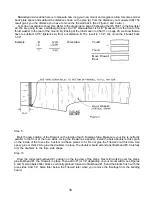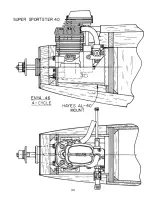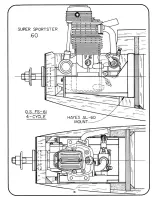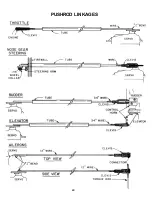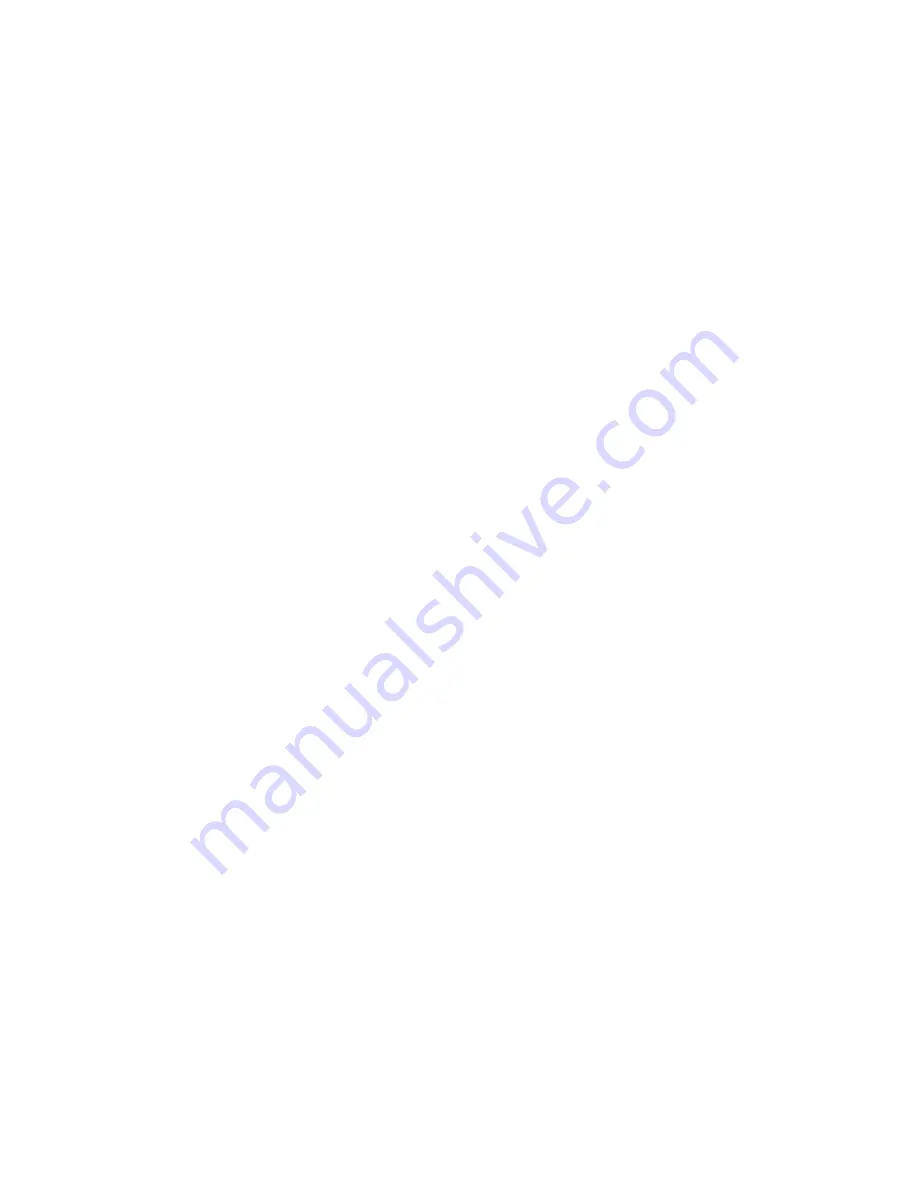
GENERAL INFORMATION
Center of Gravity: A nose heavy airplane can be a problem! Make sure you check the CG location during
construction with the radio components installed. You may need to put the radio as far back in the compart-
ment as possible. This will avoid having to carry tail weight.
Props: Always start with the manufacturer's instructions (especially for break in) for prop selection. Read
their instructions carefully because 4 cycles use entirely different diameter and pitch propellers because
they operate at a lower RPM and produce greater torgue than equivalent displacement 2-cycles.
You may find that after operating your Sportster with recommended props that you'll want to experiment
with other props. It is amazing how much you can change flight characteristics of a model by changing props.
If you are looking for higher flight speeds from your Sportster than you are getting from the average rec-
ommended prop, consider reducing the diameter and/or blade area slightly and increasing the prop pitch to
bring the RPM back to the normal range. For example, with our Enya .46 equipped Sportster 40, the instruc-
tions recommend 13x5,12x6,11 x 7,11 x 6,10x6,10 x 7 or 10x8 props. We started with an 11 x 6 propeller
which gave us fair performance. Larger props will provide slower speeds... fine for big biplanes... but not
what we wanted from our racy Sportster. For faster speed, we found that a 10-1/2 x 7-1/2 propeller added ap-
proximately 10 mph to the straight and level flight which helped make vertical maneuvers crisper due to a
faster entry speed. There is a trade off, however, as the engine idle was somewhat higher due to the lower
mass of the wood 10-1/2 x 7-1/2 propeller. Four-cycles like flywheel weight from large diameter props. This
made the plane land a little faster than with the 11x6. The prop we used was a prop designed for .60 size
pattern engines, a Max Dailey (Radio South) propeller. A similar prop is also available from DW Products.
Their addresses are:
Radio South DW Products
180 E. Burgess 5634 Crystal Ct.
Pensacola, FL 32503 Santa Rosa, CA 95404
Fuel Tank: For simplicity, we recommend a 2 line tank for your Sportster. If you can't easily reach the fuel
line for fueling purposes, you might consider using one of the new DuBro fueling valves. This will save ex-
tra plumbing that could leak or cause problems. Most 4 cycles have a small enough venturi that muffler
pressure is unnecessary. Don't forget the crankcase drain line. A lot of excess fuel comes out of the
pressure fitting. Make sure this drainage exits your fuselage. Treat it as though it were a separate exhaust.
Flying: Other than the obvious sound difference, you'll notice one other big difference from your first take
off with a four cycle equipped Sportster: You'll need to add more right rudder than normal to counter the in-
creased torque on acceleration during takeoff. Also, you may be surprised how big an effect the larger pro-
peller may have on abrupt change maneuvers such as a square loop. Because there is more mass to the
propeller, it has a larger gyroscopic force. When you change directions in maneuvers like a square loop, you
may find that the plane changes heading. This may be a result of gyroscopic precession and/or P-factor.
These factors become more prevalent with larger diameter 4 cycle props and with slower speeds generally
encountered with these engines.
Also don't forget to have a slight amount of toe-in with your main wheels. Toe out and lot's of torgue can
cause problems with ground handling. Use some toe-in, add some rudder and your takeoffs will be in a
straight line.
GOOD LUCK AND GREAT FLYING!
32
Содержание Super Sportster 20
Страница 33: ...33...
Страница 34: ...34...
Страница 35: ...35...
Страница 36: ...36...
Страница 37: ...37...
Страница 41: ...Use trim MonoKote and these letters to create your trim scheme on your Sportster 41...
Страница 43: ...PUSHROD LINKAGES 43...













